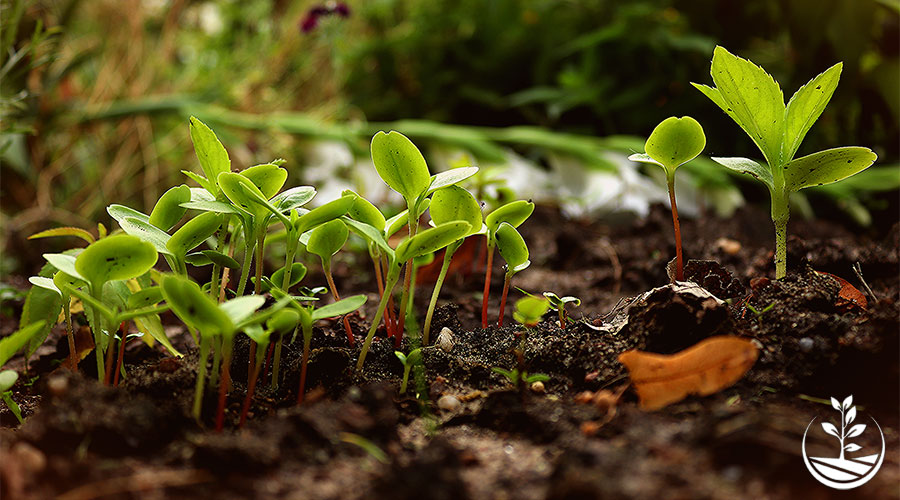Introduction
Nowadays the world is going so fast, too fast… It’s going badly, life on our blue planet is suffering…
To feed themselves, humans, more and more numerous, have invented a large number of processes, machines, products to harvest faster and in greater quantities…
We no longer worry about following the rhythm of the seasons and the earth, we treat nature like an athlete who we want to give us all the best of itself without worrying about its well-being or its health …
But we cannot exploit our land, our natural resources in this way without consequences…
By disrupting the rhythms of our planet, by overexploiting its resources by any means, we impoverish its heritage, we poison our own survival…
An impressive number of animal and plant species have already disappeared, most likely forever…
Fertilizers and weedkillers used excessively have disrupted the natural rhythms of the soil, instilled their poisons in the earth, water and in the organisms of animals and humans…
The result is a whole procession of calamities that humans can no longer ignore without endangering the lives of future generations and life itself on our beautiful planet!
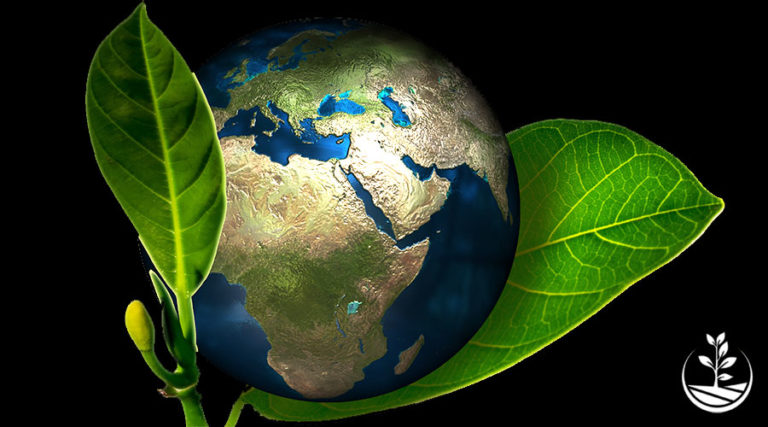
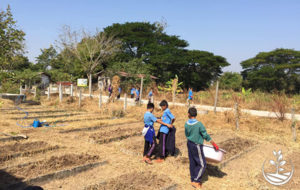
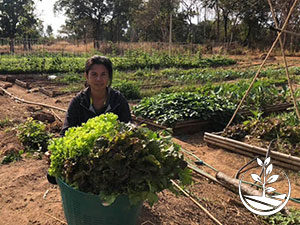
In summary, to survive we must work WITH nature and not MAKE IT WORK FOR US…
The Earth’s Ecosystem is a whole: humans, animals, plants, earth, water, air, insects, microorganisms and other bacteria… And each member of this ecosystem has its importance and contributes to the survival and well-being of all life on our planet…
For many decades, groups of humans have been doing all this and have given rise to ecological movements almost everywhere, hoping to spread their ideas for the survival and well-being of humans and nature…
Many currents of thought and cultivation techniques were born with the sole aim of producing healthier, cleaner crops and returning to a satisfactory balance for all living beings on earth.
As for us, on our farm, we are mainly inspired by Fukuoka and “natural farming” which we adapt to our values and our acquired knowledge. Aun, my wife gained her experience working in various countries and applying the techniques passed down to her by her family. We love practicing permaculture in our edible forest and are passionate about natural construction.
I will briefly present these different trends to you and then talk to you in more detail about the path that we have chosen and that we wish to develop, share and teach to anyone who wishes.
We will come back in more detail on its different techniques and practices in our next articles.
Organic...
The concept of organic farming appeared in the 1920s, in opposition to the industrialization of agriculture. This is the beginning of awareness…
Organic farming is a fairly broad concept and a bit mysterious for consumers. To benefit from this designation, producers must meet strict criteria, meeting 4 principles…
1. The principle of health: improving the health of people, livestock, but also plants, soil and living organisms. Non-use or limitation of harmful and polluting substances.
2. The principle of ecology: crops must respect the cycles of the earth, but also respect its specificity and its endemic species. Operation must not pollute the soil or the atmosphere.
3. The principle of fairness: Battery farming, animal suffering, but also the exploitation of humans cannot be accepted.
4. The precautionary principle: New technologies are not refused, but studied.
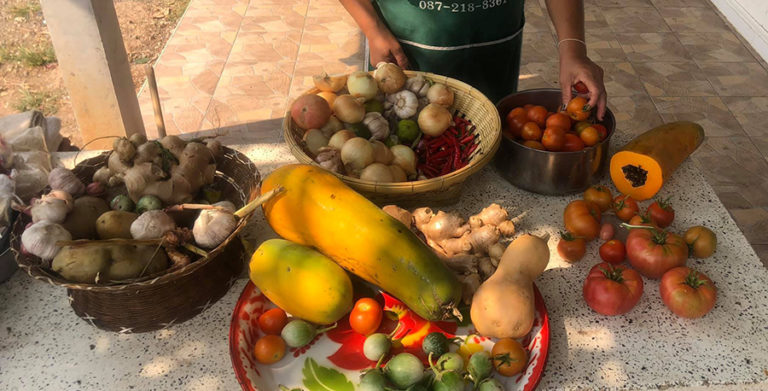
Natural or so-called “wild” agriculture (which has nothing to do with Natural Farming)
The concept of natural agriculture was developed by the Japanese Masanobu Fukuoka in the 1970s, in a radical break with industrial agriculture.
The principle of this growing method is simple… If you don’t know, don’t do anything, don’t use chemicals, let it be… Just mulch…
How can we claim to do better than nature? In his book The Revolution of a Single Blade of Straw, Masanobu Fukuoka developed several principles to define natural agriculture, also called wild agriculture…
Do not plow fields, never use fertilizers or pesticides, do not deal with weeds, do not prune, take cuttings, etc.
The only accepted human activities are therefore sowing and harvesting. It is the imbalance caused by our cultivation methods which requires the use of chemicals.
Insects and diseases are present in nature but they do not affect wild plants with as much virulence. It is because our plants are weakened that they are susceptible to diseases and parasites. Let us completely trust nature, take the time to observe its mechanisms without intervening, this is the basis for seeing our vegetable garden flourish according to the principle of natural agriculture…
Masanobu Fukuoka is considered by many people to be the precursor of permaculture and a great philosopher. We strongly advise you to read his book The One Straw Revolution which is not only a reference work but also a source of wisdom and common sense.
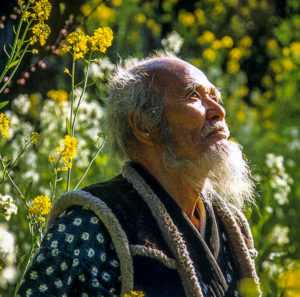
Born February 2, 1913 in Iyo and died August 16, 2008, was a Japanese farmer. His research, inspired by his Zen, Taoist, Shinto and Buddhist cultural roots, moves in the direction of a spiritual unification between Man and Nature. From the 1980s, his experiments gradually gained worldwide recognition, and he held numerous conferences and international meetings. His farm becomes a place to discuss his practices for experts and curious people from all over the world.
Références : Wikipedia
“Natural farming”, our choice for the future, naturally adapted to our living environment…
Natural agriculture has a great history of more than 50 years…
The founding of “natural farming” took place in Korea in 1967 by Hankyu Cho. Since then, Mr. Cho has started to introduce this method to other Asian countries such as Japan, China and the Philippines as well as other parts of Korea. Natural farming and its activities gained serious momentum after its legal entity was approved by the Minister of Agriculture and Forestry of Korea in 1994. So far, more than 18,000 people have been trained in “Natural farming” and its activities. natural farming”. Natural farming has also been introduced in more than 30 other countries. This is living proof that “natural farming”, which relies on indigenous microorganisms, can be implemented not only in Korea but also in other countries…
Natural farming in Asia is a modern natural agricultural practice that combines the sustainability of ancient Asian cultivation techniques with Western scientific production methods to result in phenomenal growth adapted to all climates around the world.
It comes to us from Korea and is studied all over the world with the aim of perfecting the collaboration “cultivators and cultivated” for a harmonious balance and respect for all living beings.
Basically, it is a partnership between soils and their bios and a set of formulas for improving plant growth using biostimulants. The objective is to provide fertility through the balance of the soil and its microcosm.
Practitioners build robust microbial communities resulting in fertile soils, more nutrients available to plants, and scientifically enhance natural processes to help nature by adjusting and adapting practices as necessary.
The 9 vital solutions of “natural farming” for the land, plants, animals and humans:
1. Microbes…Indigenous micro-organisms
Diverse native microbes trained to work as a team to teach the soil how to balance and utilize surrounding natural resources to support dynamic growth. Healthy living soil microbes form the basis of Korean “natural farming”!
2. The Police… Lactic acid bacteria
Emergency workers. Microbes that act like the police or the national guard to restore balance and maintain peace after a disturbance.
3. Foods… Fermented plant juice
The pure essence of a plant containing a complete nutritional profile, including complex hormones and enzymes in a plant-available form. Mimics plant exudates.
4. A cleanser… Brown rice vinegar
Vinegar made from grains or ripe fruits works to reverse the polarity of a cell during metabolization, changing from acidic to alkaline, allowing the cell to clean itself and be open to absorbing new food. Lots of other exciting features!
5. Medicines… Oriental herbal nutrients
Common themes are traditional oriental herbs that aid digestion and reproduction, first fermented and then tinctured. Gives plants immunity to pathogens.
6. For structure… Water-soluble phosphate
Used regularly, bones provide roots and strong structure, making plants tall and strong. Helps strengthen a plant against pests.
7. Fuel… Fish amino acid
Use sparingly, a food that makes plants luscious, round and full. It contains amino acids that help quickly produce DNA to grow leaves.
8. For reproduction… Water-soluble calcium
Calcium transfers accumulated carbohydrates into sugars and helps in the formation of fruits and seeds, it makes fruits softer and gives them a more supple skin.
9. For minerals… Diluted sea water
Each element is present in the sea and by diluting it to the same salinity as your blood, they can be absorbed by plants to meet trace element needs and improve soil quality through flocculation.
The recipes are in principle all edible, but there are many approaches, experienced practitioners will have a hybrid approach and do their own experiments to get the most out of these recipes and adapt them to their living environments.
Here is the definition of “Korean Natural Farming” from Master Cho, the Guru of Korean natural farming:
“Natural farming” is an agricultural methodology promoting the protection of the environment and life.
“Natural farming” uses natural resources produced locally by farmers themselves with natural farm products aided by locally available indigenous organisms.
We use micro-organisms instead of using herbicides and pesticides.
Natural farming results in superior agricultural products with higher productivity, cost and labor are minimized by maximizing the potential of nature.
Natural farming seeks harmony with nature and is based on the laws of nature.
1 the vital forces: water, heat, air
2 heat: heat from the sky, heat from the ground
3 bodies: sky, earth, air)
“Natural farming” does not use pesticides at all.
Natural farming does not use herbicides.
“Natural farming” does not favor mechanical plowing of the land.
“Natural farming” does not use chemical fertilizers.
There is no pollution from natural farming livestock barns.
Natural farming barns and enclosures do not need artificial heating.
Instead of using fossil fuels or electricity for heating, we help livestock develop a natural resistance to cold.
Natural foods made locally by farmers.
Chickens are fed whole grains of brown rice and bamboo leaves immediately after hatching. Foods rich in fiber strengthen their intestines.
Natural farming raises crops and livestock based on nutrient cycling theory. It is a theory that allows us to identify the growth stages of plants and animals.
The fruits of “natural farming” have a good taste and smell due to the right use of agricultural resources, at the right time, at the right rates and in the right quantity.
Natural agricultural crops do not suffer from soil depletion due to soil restoration capacity aided by micro-organisms and crop management based on nutrient cycling.
Natural farming rice is richer than ordinary rice in carbohydrates and other essential nutrients. In “natural farming”, rice plants have wider spaces between them to allow them to breathe thanks to better air circulation.
The natural farming barn is designed to provide an optimal environment for livestock, taking into account the social characteristics of each animal and its space requirements for comfortable living.

Dr. Cho, Global Natural Farming (CGNF). Founder and promoter of this natural agriculture network since 1965. His innovative and astonishing agricultural production practices improving food quality are revolutionary.
References : Natural Farming Hawaii

Our modest and simple experience in “natural farming”...
We practice organic and fairly simple agriculture…
Basically we don’t plow our land, we simply amend our land with compost. In Thailand, the land being quite poor and the farmers with their pesticide not helping the situation, it is important to make good compost, so we add compost each time we plant…
We never leave the earth bare, mulching is very important…
The objective is to obtain loose and flexible soil, into which the roots will have no difficulty sinking.
A plant only feeds well in living soil: it is therefore necessary to maintain the fertility of the soil before feeding the plant. This is the role of compost, an organic fertilizer, a mixture of decomposed plants that we make ourselves with garden and kitchen waste.
You have everything to gain from starting to prepare the land, then letting nature work for you.
It all starts with loosening the soil, using a grelinette (or aero-digger) if your soil is not too heavy for that. Otherwise, turn the earth over with a spade, in large clods, without crumbling or raking afterwards. The earthworms have two months of work and they like it! Spread organic matter on the surface of your soil, after having decompacted it. Don’t skimp on quantities: a layer 5 to 10 cm thick is not excessive. Then let it rest as is, without burying it.
Once the soil has been amended and mulched, natural farming comes into play, but be careful not just in any random way. It is important to know your vegetable garden and garden well, to know how to identify what the plants need and what they do not need.
To grow, crops require water, light, carbon, oxygen and mineral elements.
Air provides oxygen and carbon dioxide, the source of carbon, which the plant fixes through photosynthesis. The main nutrients the plant needs are nitrogen, phosphorus and potassium. Once you know how to identify the needs of your plants in this case, natural farming can be of great help…
You have to learn to know the needs of your plants and your soil, and always keep in mind that the best is the enemy of the good… In some of our experiments we have found that too much compost or compost tea causes death plants …
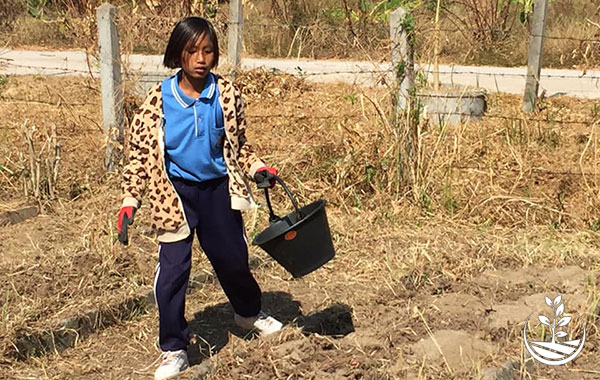
Permaculture...
Permaculture is an agricultural concept inspired by the natural agriculture model of the Japanese farmer Masanobu Fukuoka (1913-2008). This concept was brought to life in the 1970s by Australians Bill Mollison (biologist) and David Holmgren (essayist). The term “permaculture” meant permanent culture. It combines sustainable agriculture, landscaping and ecology to produce food, in less time and for less money.
Popularly considered a “cool” form of organic gardening, permaculture might be best described as a design system for resilient living and better land use based on universal ethics and ecological design principles.
It is an applied science of designing cultures, living spaces, and human agricultural systems also using the knowledge of traditional societies to reproduce the diversity, stability and resilience of natural ecosystems.
Although the main goal of permaculture has been to rethink methods of gardening, farming, ranching and forestry, the same ethics and principles apply to the design of buildings, tools and technology.
Applying the ethics and principles of permaculture in our gardens and homes inevitably leads us to rethink our lifestyles to be more in line with local surpluses and limits.
Permaculture is a systemic and global concept which aims to create ecosystems that respect biodiversity. Inspiration comes from nature and how it works.
To know more :
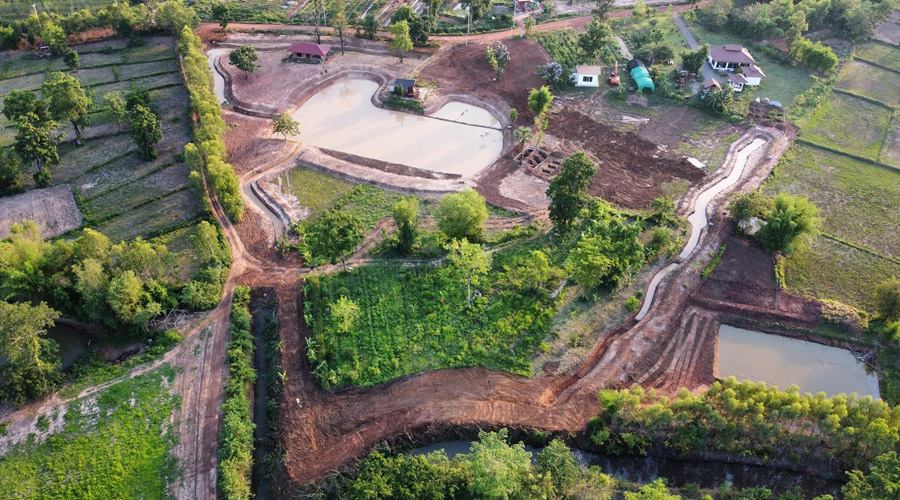
Agroforestry
Agroforestry is a land use and management system in which trees or shrubs are grown around or among crops or pastures. This diversification of the agricultural system announces an agroecological evolution, like natural ecosystems which aims to improve the functionality and sustainability of the agricultural system. Trees also produce a wide range of useful and marketable products like fruits/nuts, medicines, wood products, etc.
Biodiversity in agroforestry systems is generally higher than in conventional agricultural operations. Two or more interacting plant species in a given area create a more complex habitat that can support a greater variety of wildlife…
Carbon capture in soils is an important ecosystem service. Agroforestry practices can increase soil carbon stocks and woody biomass.
Agroforestry can significantly contribute to climate change mitigation. A study in Kenya found that the adoption of agroforestry simultaneously led to carbon storage in soils and increased livelihoods among small-scale farmers. In this case, maintaining tree species diversity, especially land use and farm size, are very important factors.
Silvopasture (from silva, Latin for forest), for example, is the practice of integrating trees, fodder, and domestic animal grazing in a mutually beneficial way. It uses the principles of managed grazing and is one of several distinct forms of agroforestry.
Our experience…
As a reminder, agroforestry is based on the association of tree planting with other crops to play complementarity and derive beneficial effects. So the idea is to create a garden based on the model of the natural forest. It would include different stages of vegetation such as large trees (fruit or nut trees), shrubs or shrubs (small fruit trees), bushes (berry or aromatic) and herbaceous plants (perennial vegetables, aromatic, medicinal plants, construction materials , fibers, materials for basketry, honey, firewood, fodder to feed animals, mulch, game, sap products, dye and oil while requiring little work once the system has reached a certain maturity.
When we moved in, we had already created an edible micro forest. In two and a half years, we have already doubled this surface area. And to date we have nearly 500 fruit trees in greenhouses waiting to be planted…
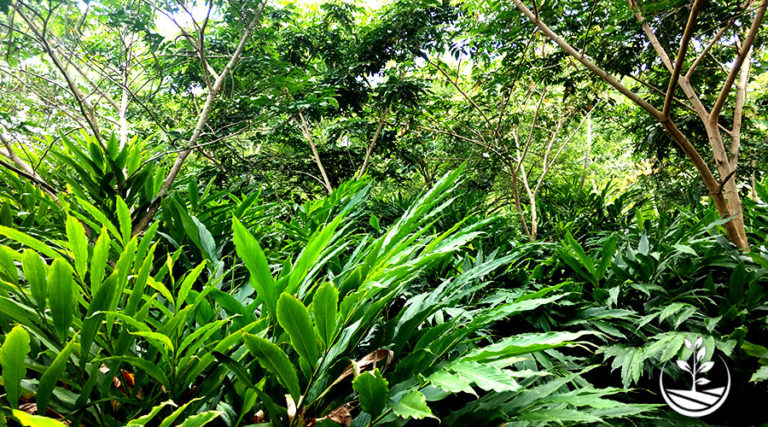
Are you in Thailand? Lucky ! Do you want to do a permaculture internship? Here is what we offer you...
Beginners course:
Supported by strong ethics and principles, permaculture is a tool based on the observation of natural ecosystems (their efficiency, productivity, stability, resilience, etc.) in order to deduce principles that will allow the creation of autonomous systems. , durable and applicable to many areas: garden, farm, home, village, etc.
During this permaculture course, participants will learn in particular to sharpen their sense of observation in order to discover how to interrelate the elements present in the garden, and to work with nature and not against it. At the end of this initiation, participants will have acquired the basic principles of permaculture, as well as a first approach to the tools which allow its application.
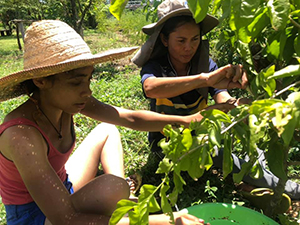
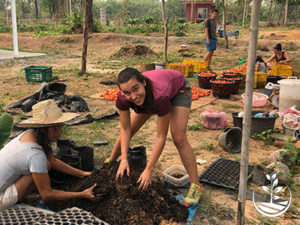
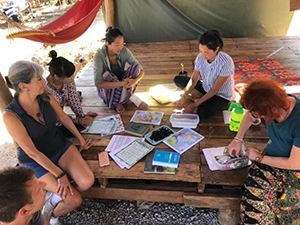
Share this:
Articles similaires
Discover more from Woofing in Thailand
Subscribe to get the latest posts sent to your email.
